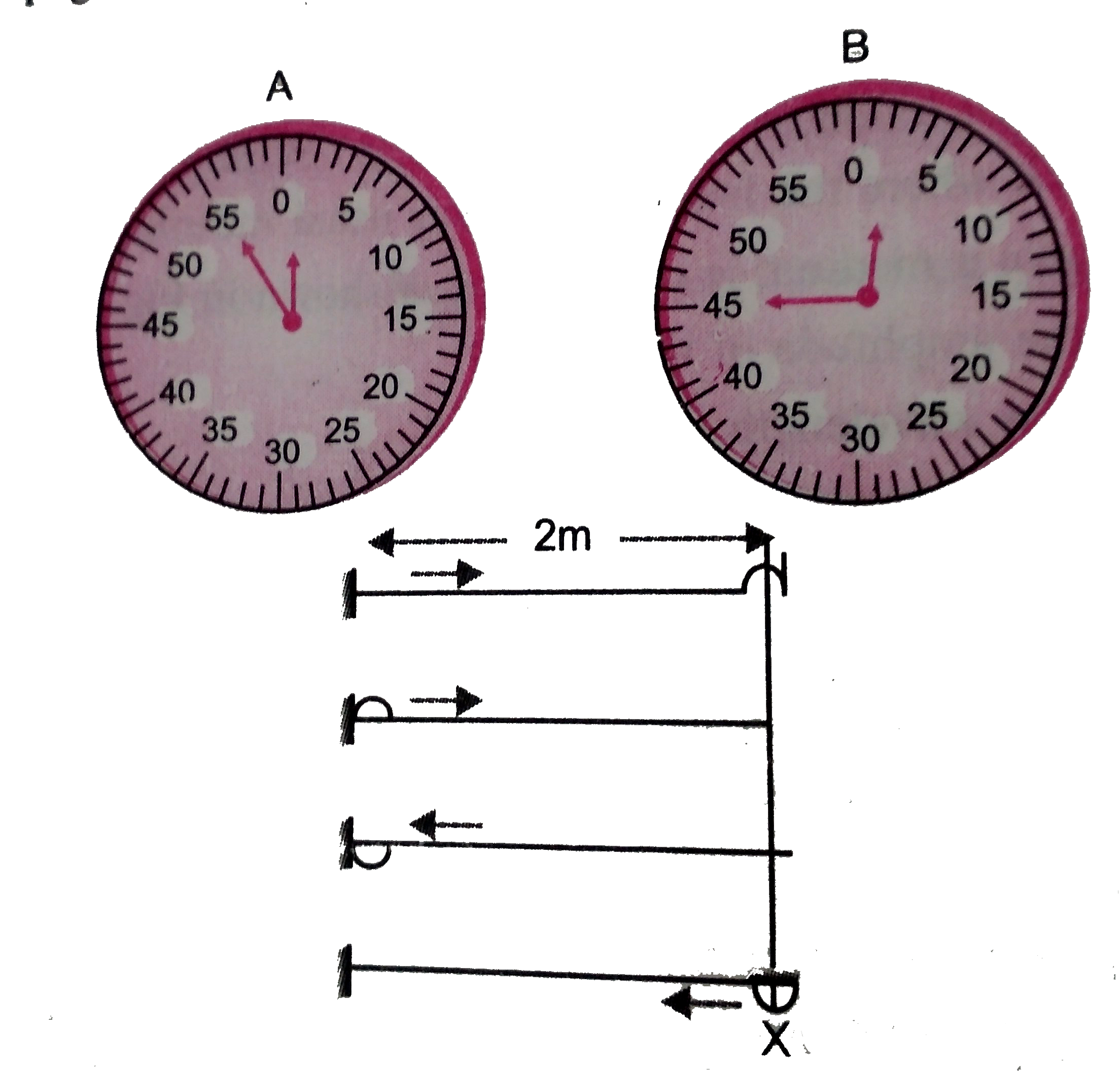Who demonstrated that cut tip of canary grass seedlings resume phototropic sensitiveness when pasted back in its position?
Charles Darwin
F.W. Went
Boysen Jensen
Paal
The correct Answer is:A
Topper's Solved these Questions
Similar Questions
A strings is stretched and a pulse is created along it. The stopwatch is started from its position A, when the pulse is in position X and is stopped in its position B, when the pulse has travelled back to its position X.
Find the velocity of propagation of the pulse along the string.
 .
.
View SolutionWho performed the experiments using canary grass to demonstrate the curvature of tip?
View Solution
Knowledge Check
Who demonstrated that the severed tip of Canary grass would resume phototropic sensitivity, when placed back in its position?
ADarwinBWentCPaalDBoysen-JensenWho observed that the coleoptiles of canary grass responded to unilateral illumination by growing towards the light (phototropism)?
AF.W. WentBB. KurosawaCSkoog and MillerDCharles Darwin and his son Francis DarwinWho performed the experiments using canary grass to demonstrate the curvature of tip?
AE.kurosawaBF.skoogCWentDDarwin
A bob of mass 0.1 kg hung from the ceiling of a room by a string 2 m long is set into oscillation The speed of the bob at its mean position 1m/s What is the trajectory of the bob if the string is cut when the bob is (a) at one of its extreme position (b) at is mean position ?
View SolutionA bob of mass 0.1 kg hung from the ceilling of a room by a string 2 m long is set into osillation The speed of the bob at its mean position 1m/s What is the trajectory of the bob if the string is cut when the bob is (a) at one of its extreme position (b) at is mean position ?
View SolutionArrange the following steps in sequential order to demonstrate the magnetic effect of the elctric cur-rent using magnetic compass.
(A) Wind an insulated conducting wire around the magnetic compass such that the axis of the coil is directed along east west direction and con-nect the free ends of the wire to a cell through a switch.
(B) Take a magnetic compass.
(C ) When current flows through the conducting wire, it behaves as a magnet and deflects the compass needle.
(D) When the switch is closed, the magnetic nee-dle in the compass deflects from its initial posi-tion and when the switch is opend, the needle comes back to its initial position.
View SolutionArrange the following steps in sequential order to demonstrate the magnetic effect of the elctric cur-rent using magnetic compass.
(A) Wind an insulated conducting wire around the magnetic compass such that the axis of the coil is directed along east west direction and con-nect the free ends of the wire to a cell through a switch.
(B) Take a magnetic compass.
(C ) When current flows through the conducting wire, it behaves as a magnet and deflects the compass needle.
(D) When the switch is closed, the magnetic nee-dle in the compass deflects from its initial posi-tion and when the switch is opend, the needle comes back to its initial position.
View SolutionArrange the following steps in sequential order to demonstrate the magnetic effect of the elctric cur-rent using magnetic compass.
(A) Wind an insulated conducting wire around the magnetic compass such that the axis of the coil is directed along east west direction and con-nect the free ends of the wire to a cell through a switch.
(B) Take a magnetic compass.
(C ) When current flows through the conducting wire, it behaves as a magnet and deflects the compass needle.
(D) When the switch is closed, the magnetic nee-dle in the compass deflects from its initial posi-tion and when the switch is opend, the needle comes back to its initial position.
View Solution
